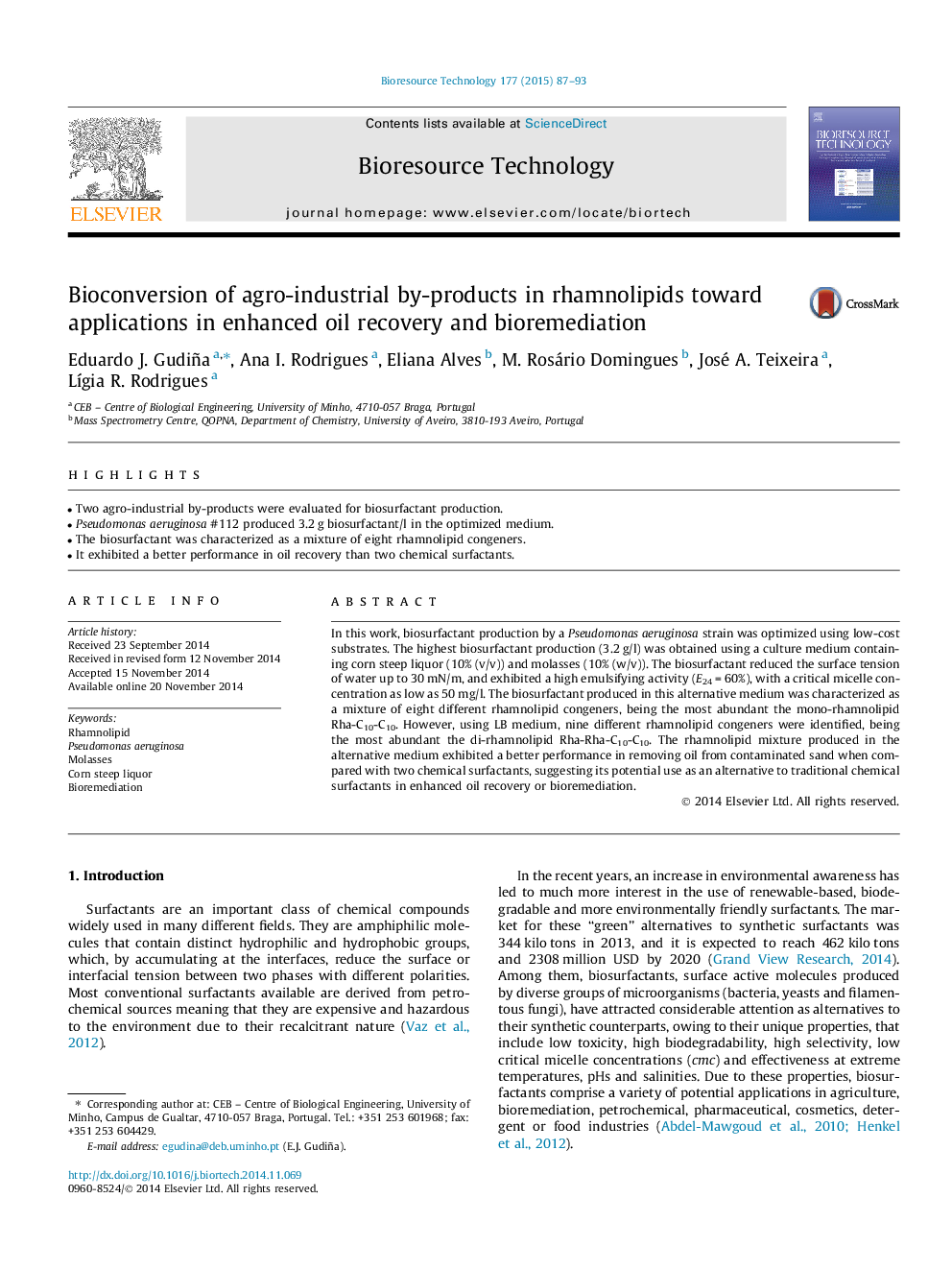| Article ID | Journal | Published Year | Pages | File Type |
|---|---|---|---|---|
| 680205 | Bioresource Technology | 2015 | 7 Pages |
Abstract
In this work, biosurfactant production by a Pseudomonas aeruginosa strain was optimized using low-cost substrates. The highest biosurfactant production (3.2Â g/l) was obtained using a culture medium containing corn steep liquor (10% (v/v)) and molasses (10% (w/v)). The biosurfactant reduced the surface tension of water up to 30Â mN/m, and exhibited a high emulsifying activity (E24Â =Â 60%), with a critical micelle concentration as low as 50Â mg/l. The biosurfactant produced in this alternative medium was characterized as a mixture of eight different rhamnolipid congeners, being the most abundant the mono-rhamnolipid Rha-C10-C10. However, using LB medium, nine different rhamnolipid congeners were identified, being the most abundant the di-rhamnolipid Rha-Rha-C10-C10. The rhamnolipid mixture produced in the alternative medium exhibited a better performance in removing oil from contaminated sand when compared with two chemical surfactants, suggesting its potential use as an alternative to traditional chemical surfactants in enhanced oil recovery or bioremediation.
Related Topics
Physical Sciences and Engineering
Chemical Engineering
Process Chemistry and Technology
Authors
Eduardo J. Gudiña, Ana I. Rodrigues, Eliana Alves, M. Rosário Domingues, José A. Teixeira, LÃgia R. Rodrigues,
